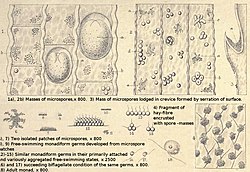| Kamera lens | |
|---|---|
 | |
| Scientific classification | |
| Domain: | Eukaryota |
| Kingdom: | incertae sedis |
| Genus: | Kamera (O.F.Müller) Patterson & Zölffel, 1991 |
| Species: | K. lens |
| Binomial name | |
| Kamera lens (O.F.Müller) Patterson & Zölffel, 1991 | |
| Synonyms [1] | |
| |
Kamera lens is a unicellular, flagellate organism and the only species in the genus Kamera. Though the species has been known for centuries, it is poorly understood. Its systematic position within the Eukaryota is uncertain.